
Stanley Newcomb Kenton was an American popular music and jazz artist. As a pianist, composer, arranger and band leader, he led an innovative and influential jazz orchestra for almost four decades. Though Kenton had several pop hits from the early 1940s into the 1960s, his music was always forward-looking. Kenton was also a pioneer in the field of jazz education, creating the Stan Kenton Jazz Camp in 1959 at Indiana University.

June Christy was an American singer, known for her work in the cool jazz genre and for her silky smooth vocals. Her success as a singer began with The Stan Kenton Orchestra. She pursued a solo career from 1954 and is best known for her debut album Something Cool. After her death, she was hailed as "one of the finest and most neglected singers of her time."
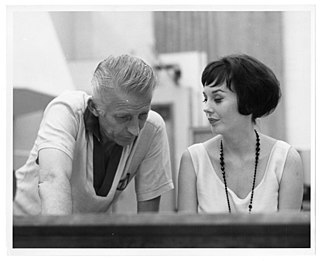
Ann Richards was an American pop and jazz singer. She was the second wife of bandleader Stan Kenton. She had a short career in the late 1950s and early 1960s.
Jay Saunders(néJohn Henry Saunders III; born 29 June 1944 Sacramento, California) is an American trumpeter and music educator at the collegiate level. In the 1970s, Saunders was a lead trumpeter with big bands — notably the Stan Kenton Orchestra — and a session musician in the Dallas area. Saunders recently retired from the faculty at the University of North Texas College of Music where he taught jazz trumpet, jazz recordings, and directed the One O'Clock Lab Band.

Willis Leonard Holman, known professionally as Bill Holman, is an American composer, arranger, conductor, saxophonist, and songwriter working in jazz and traditional pop. His career is over seven decades long, having started with the Charlie Barnet orchestra in 1950.
Anthony Sebastian "Tony" Campise was an American jazz musician. He primarily played tenor saxophone and flute though he was a multireedist who also used clarinet and oboe. He was known for his exceptional technique and fluid style on all reed instruments; Campise is most recognized for his association with the Stan Kenton Orchestra in the mid-1970s.
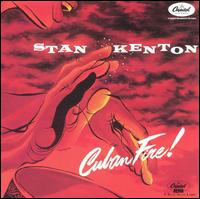
Cuban Fire! is an album by Stan Kenton and his orchestra released in 1956 by Capitol Records. This was Stan Kenton's big band's first full-length recording of Afro-Cuban-styled music. The LP charted for four weeks in Billboard starting on September 15, 1956, peaking at #17. The concept of the original 1956 recording centers on the Cuban Fire! suite Kenton had commissioned from composer Johnny Richards. The 1991 CD re-issue is augmented with one extra track from the 1956 sessions and five cuts recorded four years later by the first of Kenton's mellophonium orchestras.
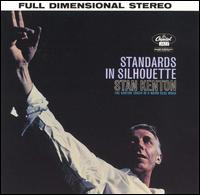
Standards in Silhouette is an album recorded in September 1959 by Stan Kenton and his orchestra. The entire set of arrangements for the LP were written by Bill Mathieu. This recording stands alone in approach and style; Kenton himself only plays on "Django" and every standard is done at a slow, ballad tempo with very sparse, effusive writing.

City of Glass, an album originally issued as a 10" LP by Stan Kenton, consists entirely of the music of Bob Graettinger. The original album has been reconstituted in different LP re-issues, and the entire set of Kenton/Graettinger Capitol Records sessions is on the digital CD City of Glass.
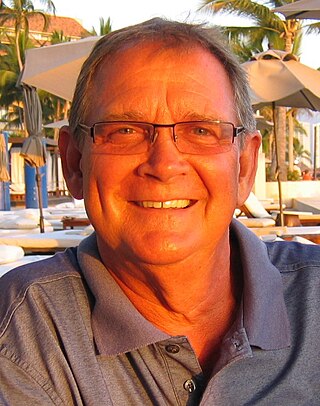
Robert Harry "Bob" Curnow is an American musician who served as a trombonist, staff arranger and producer for the Stan Kenton Orchestra during the 1960s and 1970s. As a composer and arranger he has become well known for large ensemble jazz music set to contemporary fusion and rock music of groups such as Chicago, Blood, Sweat and Tears, and the Yellowjackets. Most notably he arranged the music for and produced the award-winning and critically acclaimed CD, Bob Curnow's L.A. Big Band Plays The Music of Pat Metheny and Lyle Mays. His compositions and arrangements are heavily influenced by earlier writers for the Stan Kenton Orchestra such as Pete Rugolo, Bill Russo, Johnny Richards and Bill Holman. Curnow is currently owner and President of Sierra Music Publications, Inc., he is also prominent in the instrumental music and jazz education fields.

Adventures in Jazz is an album by the Stan Kenton Orchestra, recorded in late 1961 but not released until about a year later in November 1962. The album won a Grammy Award in the category for Best Jazz Performance – Large Group (Instrumental) category in 1963. This would be Kenton's second Grammy honor in as many years, the first being Kenton's West Side Story winning the Best Large Jazz Ensemble Album in 1962. Adventures In Jazz was also nominated for Best Engineered recording for the 1963 Grammys. The 1999 CD re-issue of Adventures In Jazz is augmented with two alternate takes from the original recording sessions and one track from Kenton's release Sophisticated Approach.

Kenton's West Side Story is an album by the Stan Kenton Orchestra recorded in 1961 and released by Capitol Records. It won the Grammy Award in 1962 for Best Jazz Performance – Large Group (Instrumental). The album was recorded in 1961 and released quickly to take advantage of the movie premiere of the musical West Side Story. Kenton won his first Grammy Award and he won again the next year in the same category with Adventures in Jazz. Kenton's West Side Story peaked at No. 16 on the Billboard magazine album chart.
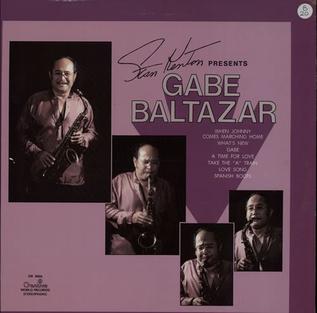
Stan Kenton Presents Gabe Baltazar is an album by Gabe Baltazar. It was the last recording by Stan Kenton's Creative World Records label prior to Kenton's death on August 25, 1979. It was also the last of the "Stan Kenton presents..." series of albums ; this recording presents the talent of the alto saxophonist and former Kenton band member Gabe Baltazar. Though never reissued on CD the recording is critically acclaimed and does a good job highlighting the jazz talents of a legendary jazz artist (Baltazar) at the peak of his playing career. He is backed up by a 17 piece big band on most cuts, a string section is added to one track.

The Jazz Compositions of Dee Barton is an album by bandleader Stan Kenton recorded in 1967 by Capitol Records.

Live at Redlands University is a double live album by American jazz musician Stan Kenton and his orchestra, released in late 1970 by Creative World Records. It was the initial release on Kenton's newly formed record company after he broke his relationship with Capitol Records. Recording for the album took place in Southern California at Redlands University in August of 1970.
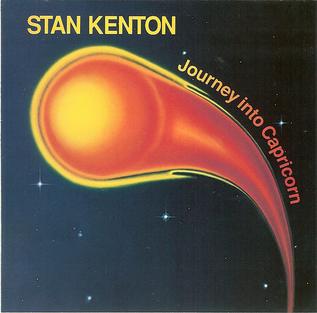
Journey into Capricorn is the last studio album by American jazz musician Stan Kenton and his orchestra, released in late 1976, by Creative World Records. Recording sessions for the album took place in Hollywood, California on August 16–18, 1976. The initial release of the album titled both the album and the individual tune Journey to Capricorn. The later release reworked the cover art and corrected both titles to JOURNEY INTO CAPRICORN.
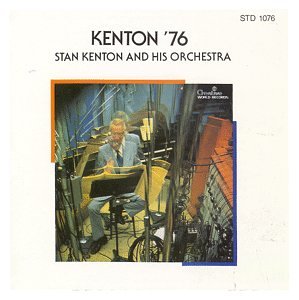
Kenton '76 is one of the last two studio albums by American jazz musician Stan Kenton and his orchestra, released in 1976, by Creative World Records. Recording sessions for the album took place in Chicago on December 3–5, 1975. The album was recorded after the longest hiatus the band would have from the studio due to financial difficulties and Kenton's growing health problems.
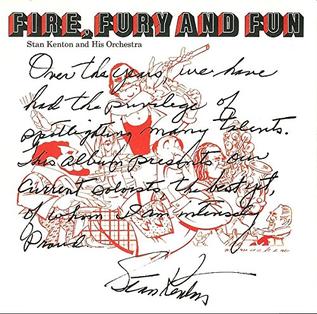
Fire, Fury, and Fun is a studio album by American jazz musician Stan Kenton and his orchestra, released on Creative World Records. Recording sessions for the album took place in Chicago on September 26/27, 1974 at Universal Recording.

7.5 on the Richter Scale is an album by American jazz musician Stan Kenton and his Orchestra that was released in 1973. Recording sessions for the album took place during August 1973 in Hollywood, California.

National Anthems Of The World is the first studio album by American jazz musician Stan Kenton and his orchestra under the Creative World label, released late 1972. Recording sessions for the album took place at Western Recorders, August 25, 28, 29, 30 & 31, 1972 in Hollywood, California.



















